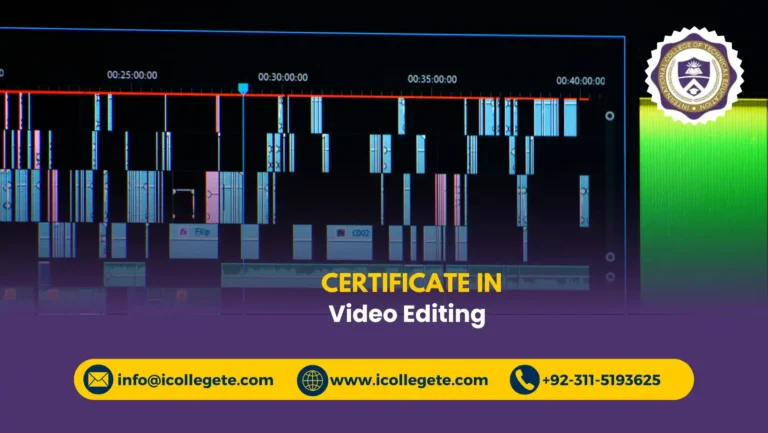In today’s competitive engineering world, mechanical engineers need to stay ahead by mastering the tools that allow them to create accurate and detailed mechanical designs. One of the most powerful tools for mechanical drafting and design is AutoCAD Mechanical. The AutoCAD Mechanical Course in Rawalpindi provides professionals and aspiring engineers the opportunity to learn this essential software, enabling them to streamline the design process, improve accuracy, and produce high-quality mechanical drawings.
The AutoCAD Mechanical Course in Rawalpindi is designed to provide participants with a comprehensive understanding of AutoCAD’s mechanical design tools. This specialized course focuses on mechanical components and systems, offering in-depth training in creating and managing technical drawings, assemblies, and parts. Whether you are a student, professional, or someone looking to shift your career towards mechanical design, this course equips you with the knowledge and skills required to excel in the mechanical engineering field.
This course covers all aspects of AutoCAD Mechanical, focusing on its specific applications in mechanical engineering. From designing individual parts to assembling entire mechanical systems, students will learn how to create precise mechanical drawings and use industry-specific tools for tasks like drafting, modeling, and detailing. The course also includes the use of mechanical libraries, which will help participants automate their design processes and make their workflow more efficient.
By the end of this course, students will be proficient in utilizing AutoCAD Mechanical to produce accurate 2D and 3D drawings, manage design components, and understand the best practices for mechanical design drafting.
Study Units
The AutoCAD Mechanical Course in Rawalpindi is divided into key modules that ensure participants receive a well-rounded education on the software and its applications in mechanical engineering:
- Introduction to AutoCAD Mechanical: Getting familiar with the AutoCAD Mechanical interface, basic commands, and tools used for mechanical design.
- Understanding Mechanical Drawing Standards: Learning the industry standards for mechanical drawings, including dimensions, tolerances, and symbol usage.
- Part and Assembly Design: Creating 2D and 3D models of individual mechanical parts and learning how to assemble them into functional mechanical systems.
- Mechanical Libraries and Catalogs: Utilizing AutoCAD’s vast library of standard mechanical components and parts to speed up the design process.
- Creating and Managing Mechanical Drawings: Drafting detailed mechanical drawings, including sections, views, and annotations specific to mechanical designs.
- Dimensional and Geometric Constraints: Applying geometric and dimensional constraints to parts and assemblies for proper design functionality.
- Bill of Materials (BOM): Generating BOM reports that list the materials required for a project, including part numbers, quantities, and specifications.
- 3D Modeling and Visualization: Learning how to create and modify 3D mechanical models for a more comprehensive design representation.
- Advanced Drawing and Detailing Techniques: Applying advanced AutoCAD Mechanical features to enhance the precision and efficiency of mechanical drawings.
Learning Outcomes
By the end of the AutoCAD Mechanical Course, participants will:
- Gain proficiency in using AutoCAD Mechanical tools for mechanical drafting and design.
- Understand mechanical drawing standards and best practices for creating precise technical drawings.
- Be able to design and model mechanical parts and assemblies using 2D and 3D techniques.
- Master the use of mechanical libraries to automate the design process and reduce time spent on creating common components.
- Create detailed and accurate mechanical drawings, including sections, views, and dimensions.
- Utilize the Bill of Materials (BOM) feature to manage and document materials used in mechanical designs.
- Apply advanced drawing and detailing techniques to improve the quality of mechanical designs and drawings.
Course Benefits
- Industry-Specific Skills: Gain expertise in AutoCAD Mechanical, a software specifically tailored for mechanical engineering, and become highly skilled in the drafting and design of mechanical systems.
- Increased Productivity: Learn to automate repetitive tasks and speed up the design process, saving time and reducing the likelihood of errors.
- Hands-On Training: Participate in practical exercises and real-world projects that help you apply the knowledge gained throughout the course.
- Certified Qualification: Receive a certificate upon successful completion of the course, which adds value to your resume and enhances career prospects.
- Expert Instructors: Learn from experienced instructors who provide real-world insights and practical tips for using AutoCAD Mechanical in various engineering fields.
- Advanced Features: Understand and master advanced AutoCAD Mechanical features that are commonly used in the industry, such as part libraries, BOM, and 3D modeling tools.
Who Is This Course For?
The AutoCAD Mechanical Course in Rawalpindi is ideal for:
- Mechanical Engineers: Professionals looking to enhance their skills and efficiency in mechanical design using AutoCAD Mechanical.
- Drafters and Technicians: Those working in mechanical design who want to improve their drafting skills and adopt industry-standard tools.
- Engineering Students: Students studying mechanical engineering or related disciplines who wish to gain practical knowledge of AutoCAD Mechanical.
- Freelancers: Independent professionals who offer mechanical design services and want to specialize in AutoCAD Mechanical.
- Project Managers: Managers overseeing mechanical engineering projects who need to understand AutoCAD Mechanical for better coordination with design teams.
Future Progression
Upon completing the AutoCAD Mechanical Course, participants have various options for career progression:
- Mechanical Design Engineer: Work on designing mechanical systems, parts, and assemblies for industries such as manufacturing, automotive, aerospace, and energy.
- CAD Technician or Drafter: Specialize in the drafting and technical drawing of mechanical components, working in design offices or with engineering firms.
- 3D Modeling Specialist: Focus on creating 3D mechanical models, simulations, and prototypes for product development and testing.
- Product Design Engineer: Apply AutoCAD Mechanical skills to the design and development of consumer products, machinery, and equipment.
- Project Manager: Lead mechanical engineering projects, overseeing the design, drafting, and manufacturing processes from conception to completion.
- Freelance Mechanical Designer: Offer design services to clients in various industries, using AutoCAD Mechanical to create custom parts, systems, and technical drawings.
- Advanced Software Training: Further enhance your skills with advanced CAD software like SolidWorks, CATIA, or Autodesk Inventor to specialize in other aspects of mechanical design, including simulation and advanced 3D modeling.
The AutoCAD Mechanical Course in Rawalpindi is an excellent opportunity for those looking to advance their careers in mechanical design. Whether you’re an engineer, student, or professional seeking to specialize in mechanical drafting, this course provides the knowledge and hands-on experience you need to succeed in the competitive world of mechanical engineering. Mastering AutoCAD Mechanical will not only improve your technical expertise but also open up a wide range of career opportunities in industries such as manufacturing, aerospace, automotive, and more.






